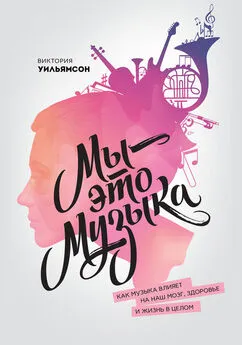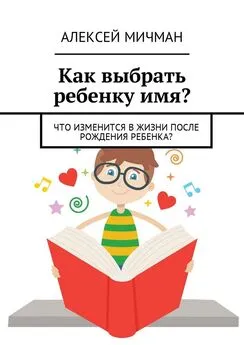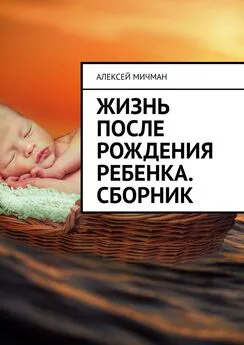Тони Харман - Эффект микробиома. Как способ рождения ребенка влияет на его будущее здоровье
- Название:Эффект микробиома. Как способ рождения ребенка влияет на его будущее здоровье
- Автор:
- Жанр:
- Издательство:Ресурс
- Год:2017
- Город:Москва
- ISBN:978-5-9909578-0-0
- Рейтинг:
- Избранное:Добавить в избранное
-
Отзывы:
-
Ваша оценка:
Тони Харман - Эффект микробиома. Как способ рождения ребенка влияет на его будущее здоровье краткое содержание
«Эффект микробиома» – это первая книга, в центре внимания которой – активно появляющиеся сегодня научные данные о том, как на формирование микробиома влияет способ появления человека на свет. Тони Харман и Алекс Уэйкфорд задают важные вопросы о потенциальных отдаленных последствиях таких ставшими обычными вмешательств в роды, как кесарево сечение или применение синтетического окситоцина, и делятся с читателями новой информацией о том, как искусственное вскармливание влияет на видовое разнообразие микробиома младенцев.
В книге содержится информация от экспертов из разных стран, в том числе акушерок, разработчиков глобальной политики в сфере здравоохранения, профессионалов в области педиатрии, иммунотоксикологии и генетики.
Книга предназначена для родителей, акушерок и других специалистов в области здравоохранения.
Эффект микробиома. Как способ рождения ребенка влияет на его будущее здоровье - читать онлайн бесплатно ознакомительный отрывок
Интервал:
Закладка:
39 Blaser, M.J., Missing Microbes: How the overuse of antibiotics is fueling our modern plagues (Henry Holt and Co., an imprint of Macmillan Publishers, New York, 2014.), p.94.
40 Dietert, R. & Dietert, J. (2012), ‘The completed self: an immunological view of the human-microbiome superorganism and risk of chronic diseases’ Entropy, Vol. 14, pp.2036–2065, www.mdpi.com/1099-4300/14/11/2036
41 Barker, D.J.P., and Godfrey, K.M (2001), ‘Fetal programming and adult health’, Public Health Nutrition, Vol. 4 (2b), pp.611–624, dx.doi.org/10.1079/PHN2001145, published online 27 September 2007
42 Okada, H., Kuhn, C., Feillet, H, and Bach, J-F. (2010), ‘The “hygiene hypothesis” for autoimmune and allergic diseases: an update’, Clinical and Experimental Immunology, Vol. 160(1), pp.1–9, www.ncbi.nlm.nih.gov/pmc/articles/PMC2841828
43 Von Mutius, E. (2010), ‘99th Dahlem conference on infection, inflammation and chronic inflammatory disorders: farm lifestyles and the hygiene hypothesis’, Clinical and Experimental Immunology, Vol. 160(1), pp.130–5; www.ncbi.nlm.nih.gov/pubmed/20415863
44 BabyMed, ‘En caul birth’, www.babymed.com/en-caul-birth
45 Blaser, M.J., op. cit.,p.95
46 Rodriguez, J.M., Murphy, K., Stanton, C. Ross, R.P., Kober, O.I., Juge, N., et al. (2015), ‘The composition of the gut microbiota throughout life, with an emphasis on early life’, Microbial Ecology in Health and Disease, Vol. 26: 26050, www.microbecolhealthdis.net/index.php/mehd/article/view/26050
47 Research by Backhed et al in 2015 suggests that the act of stopping breastfeeding (rather than simply the introduction of solids) could play a part in determining when the microbiome stabilises, but how and why is still unclear.
48 Ward, R.E., Ninonuevo M., Mills, D.A., Lebrilla, C.B., German, J.B. (2006), ‘In vitro fermentation of breast milk oligosaccharides by Bifidobacterium infantis and Lactobacillus gasseri’, Applied and Environmental Microbiology, Vol. 72, pp.4497–9
49 Kashtanova, D.A., Popenko, A.S., Tkacheva, O.N., Tyakht, A.B., Alexeev, D.G. and Boytsov S.A. (2015), ‘Association between the gut microbiota and diet: fetal life, early childhood, and further life’, Nutrition, published online 31 December 2015, www.sciencedirect.com/science/article/pii/S0899900715005341
50 Voreades, N., Kozil, A., and Weir, T.L. (2014), ‘Diet and the development of the human intestinal microbiome’, Frontiers in Microbiology, Vol. 5, p494, www.ncbi.nlm.nih.gov/pmc/articles/PMC4170138
Глава 3
51 WidstroЁm, A.M., Ransjo-Arvidson, A.B., Christensson, K., Matthiesen, A.S., Winberg, J., and UvnaЁs-Moberg, K. (1987), ‘Gastric suction in healthy newborn infants: effects on circulation and developing feeding behaviour’, Acta Paediatrica Scandinavica, Vol. 76, pp.566–572
52 WidstroЁm, A.M., Lilja, G., Aaltomaa-Michalias, P., DahlloЁf, A., Lintula, M., and Nissen, E. (2011), ‘Newborn behaviour to locate the breast when skin-to-skin: a possible method for enabling early self-regulation’, Acta Paediatrica Scandinavica, Vol. 100(1), pp.79–85, www.ncbi.nlm.nih.gov/ pubmed/20712833
53 La Belle Colustrum, ‘Components of colustrum’, labelleinc.com/human- health/components-of-colostrum
54 Blaser, M.J., Missing Microbes: How the overuse of antibiotics is fueling our modern plagues (Henry Holt and Co., an imprint of Macmillan Publishers, New York, 2014.), p.94
55 Cabrera-Rubio, R., Collado, M.C., Laitinen, K., Salminen, S., Isolauri, E., and Mira, A. (2012), The human milk microbiome changes over lactation and is shaped by maternal weight and mode of delivery. American Journal of Clinical Nutrition, Vol. 96(3), pp.544–51
56 HiPP organic, ‘Our formula milks’, www.hipp.co.uk/products/our-baby- milks
Глава 4
57 US Centers for Disease Control and Prevention (1999), ‘Achievements in public health, 1900–1999: healthier mothers and babies’, www.cdc.gov/ mmwr/preview/mmwrhtml/mm4838a2.htm
58 Kassebaum, N.J., Bertozzi-Villa, A, Coggeshall, M.S., Shackelford, K.A., Steiner, C., Heuton, K.R., et al. (2013), ‘Global, regional, and national levels and causes of maternal mortality during 1990–2013: a systematic analysis for the Global Burden of Disease Study’, The Lancet, Vol.384, Issue 9947, pp.980–1004, www.thelancet.com/journals/lancet/article/PIIS0140-6736%2814%2960696-6/abstract
59 Health and Social Care Information Centre (2015), NHS maternity statistics – England, 2013-14, www.hscic.gov.uk/catalogue/PUB16725
60 World Health Organization news release (2015), Casearean sections should only be performed when medically necessary, www.who.int/mediacentre/news/releases/2015/caesarean-sections/en/
61 World Health Organization Global Health Observatory data repository, ‘Millennium Development Goal 5: Maternal and reproductive health. Women: data by country’, apps.who.int/gho/data/node.main.REPWOMEN39?lang=en
62 The Associated Press (2015), ‘New rules to curb “epidemic” of caesarean births in Brazil (update)’, MedicalXpress, 7 January, medicalxpress.com/news/2015-01-curb-epidemic-cesarean-births-brazil.html
63 Holmgren G, SjoЁholm L, Stark M. The Misgav Ladach method for cesarean section: method description. Acta Obstet Gynecol Scand. 1999 Aug;78(7):615-21. http://www.ncbi.nlm.nih.gov/pubmed/10422908
64 National Institute for Health and Care Excellence (2011), NICE guidelines [CG132]: Caesarean section, www.nice.org.uk/guidance/cg132/chapter/ guidance
65 Barber, E.L., Lundsberg, L., Belanger, K., Pettker, C.M., Funai, E.F., and Illuzzi, J.L. (2011), ‘Contributing indications to the rising cesarean delivery rate’, Obstetrics and Gynecology, Vol. 118(1), pp.29–38, www.ncbi. nlm.nih.gov/pmc/articles/PMC3751192
66 MedicineNet.com (2015), ‘Probiotics: what are prebiotics and synbiotics?’, 10 September, www.medicinenet.com/probiotics/page3.htm
67 Azad, M.B., Becker, A.B., Guttman, D.S., Field, C.J., Chari, R.S., Sears, M.R., Becker, A.B., Scott, J.A., Kozyrskyj, A.L., and the CHILD Study investigators (2013), ‘Gut microbiota of healthy Canadian infants: profiles by mode of delivery and infant diet at 4 months’, Canadian Medical Association Journal, Vol. 185, pp.385–94
68 Group B Strep Support, ‘Information about group B strep for pregnant women’, gbss.org.uk/who-we-are/about-gbs/what-is-gbs/for-pregnant-women
69 BabyCentre Medical Advisory Board (2012), ‘Group B streptococcus in pregnancy’, BabyCentre, www.babycentre.co.uk/a1647/group-b-streptococcus-in-pregnancy
70 Dekker R., ‘Group B strep in pregnancy: evidence for antibiotics and alternatives’, Evidence Based Birth evidencebasedbirth.com/groupbstrep
71 Azad, M.B., Konya, T., Persaud, R.R., Guttman, D.S., Chari, R.S., Field, C.J., Sears, M.R., Mandhane, P.J., Turvey, S.E., Subbarao, P., Becker, A.B., Scott, J.A., Kozyrskyj, A.L. and the CHILD Study investigators (2015), ‘Impact of maternal intrapartum antibiotics, method of birth and breastfeeding on gut microbiota during the first year of life: a prospective cohort study’, BJOG 28 Sep [Epub ahead of print], www.ncbi.nlm.nih.gov/pubmed/26412384
72 Hecht, D.W., ‘Bacteroides species’, Antimicrobe database, www.antimicrobe.org/b85.asp
73 Fraser, S.L., and Brusch, J.L. (2016), ‘Enterococcal infections’, Medscape, 17 March, emedicine.medscape.com/article/216993-overview
74 Azad, V.B., Konya, T., Guttman, D.S., Field, C.J., Sears, M.R., Hayglass, K.T., Mandhane, P.J., Turvey, S.E., Subbarao, P., Becker, A.B., Scott, J.A., Kozyrskyj, A.L. and the CHILD Study investigators (2015), ‘Infant gut microbiota and food sensitization: associations in the first year of life’, Clinical & Experimental Allergy, Vol.45, pp.632–43, www.ncbi.nlm.nih.gov/pubmed/25599982
75 Smith, J., Plaat, F., and Fisk, N.M. (2008), ‘The natural Caesarean: a woman-centred technique’, BJOG. Vol. 115(8), pp.1037–42, www.ncbi.nlm.nih.gov/pmc/articles/PMC2613254
76 Callaway, E. (2016), ‘Scientists swab C-section babies with mothers’ microbes’, Nature News, 1 February www.nature.com/news/scientists- swab-c-section-babies-with-mothers-microbes-1.19275
Глава 5
77 Nancy, P., Tagliani, E., Chin-Siean, T., Asp, P., Levy, D.E. and Erlebacher, A., (2012), ‘Chemokine gene silencing in decidual stromal cells limits T cell access to the maternal-fetal interface’, Science, Vol. 336(6086), pp.1317–21. www.ncbi.nlm.nih.gov/pmc/articles/PMC3727649
78 Yong, E (2013). ‘Newborn immune systems suppressed’, The Scientist, 6 November, www.the-scientist.com/?articles.view/articleNo/38187/title/Newborn-Immune-Systems-Suppressed/
Глава 6
79 We made a documentary film called Freedom For Birth in 2012 (freedomforbirth.com) looking at the implications of a ruling by the European Court of Human Rights that every mother has the human right to decide the circumstances of her birth. Case of Ternovszky v. Hungary. ECHR, 14 December 2010, application no.67545/09
80 Science Museum, ‘What did the Human Genome Project find? How many genes do you have?’ www.sciencemuseum.org.uk/whoami/findoutmore/yourgenes/whatwasthehumangenomeproject/whatdidthehumangenomeprojectfind
81 Feil, R., and Fraga, M.F. (2012), Epigenetics and the environment: emerging patterns and implications’, Nature Reviews Genetics Vol.13, pp.97–109, www.nature.com/nrg/journal/v13/n2/full/nrg3142.html
82 Thomson, H. (2014), ‘“Epigenetic” gene tweaks seem to trigger cancer’, New Scientist Daily News, 25 July, www.newscientist.com/article/dn25959-epigenetic-gene-tweaks-seem-to-trigger-cancer
83 McKie, R. (2013), ‘Why do identical twins end up having such different lives?’, The Observer, 2 June, www.theguardian.com/science/2013/jun/02/twins-identical-genes-different-health-study
84 Duhl, D., Vrieling, H., Miller, K.A., Wolff, G.L., and Barsh, G.S. (1994), ‘Neomorphic agouti mutations in obese yellow mice’, Nature Genetics Vol. 8(1), pp59–65, www.ncbi.nlm.nih.gov/pubmed/7987393
85 Adams, J. (2008), ‘Obesity, epigenetics, and gene regulation’, Nature Education, Vol. 1(1), p.128 www.nature.com/scitable/topicpage/obesity-epigenetics-and-gene-regulation-927
86 The EPIIC International Research Group was founded by Professors Soo Downe from the University of Central Lancashire, Holly Powell-Kennedy from Yale University and Professor Hannah Dahlen from Western Sydney University
87 Dahlen, H.G., Kennedy, H.P., Anderson, C.M., Bell, A.F., Clark, A., Fourer, M., et al. (2013), Medical Hypotheses, Vol. 80(5), pp.656–62, www.ncbi.nlm.nih.gov/pubmed/23414680
88 Almgren, M., Schlinzig T, Gomez-Cabrero, D., Gunnar, A., Sundin, M., Johansson, S., et al. (2014),‘Cesarean delivery and hematopoietic stem cell epigenetics in the newborn infant: implications for future health?’, American Journal of Obstetrics and Gynaecology, Vol. 211(5), pp.502. e1–502.e8, www.ncbi.nlm.nih.gov/pubmed/24996659
Глава 7
89 Hillman, N., Kallapur, S. G., and Jobe, A. (2012). ‘Physiology of transition from intrauterine to extrauterine life’, Clinics in Perinatology, Vol. 39(4), pp.769–83, www.ncbi.nlm.nih.gov/pmc/articles/PMC3504352
90 Blustein J., Liu, J. (2015), ‘Time to consider the risks of caesarean delivery for long term child health’, BMJ, Vol. 350: h2410. www.bmj. com/content/350/bmj.h2410. For a lay summary see: Kraft, A. (2015), ‘C-section births linked to long-term child health problems’, CBS News, 11 June, www.cbsnews.com/news/c-section-cesarean-births-child-health-problems-asthma-obesity-diabetes
91 Black, M., Bhattacharya, S., Philip, S., Norman, J.E., and McLernon, D.J. (2015), ‘Planned cesarean delivery at term and adverse outcomes in childhood health’, Journal of the American Medical Association 2015;314(21):2271–79. For a layman’s summary see: Rabin, R. (2015), ‘C-sections are best with a little labor, a study says’, The New York Times, 14 December, well.blogs.nytimes.com/2015/12/14/c-sections-are-best-with-a-little-labor-a-study-says/
Читать дальшеИнтервал:
Закладка:
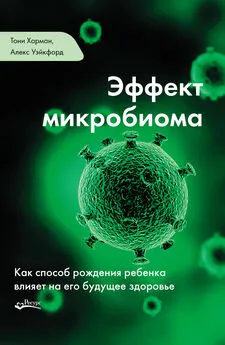
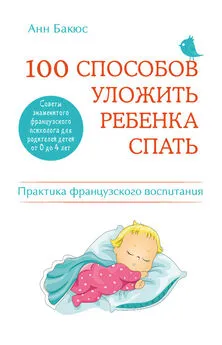
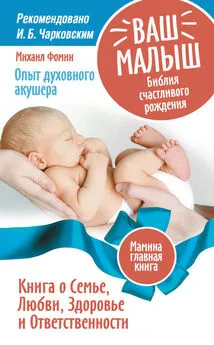
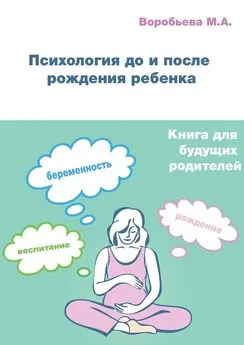

![Аре Бреан - Музыка и мозг [Как музыка влияет на эмоции, здоровье и интеллект]](/books/1068692/are-brean-muzyka-i-mozg-kak-muzyka-vliyaet-na-emoc.webp)
